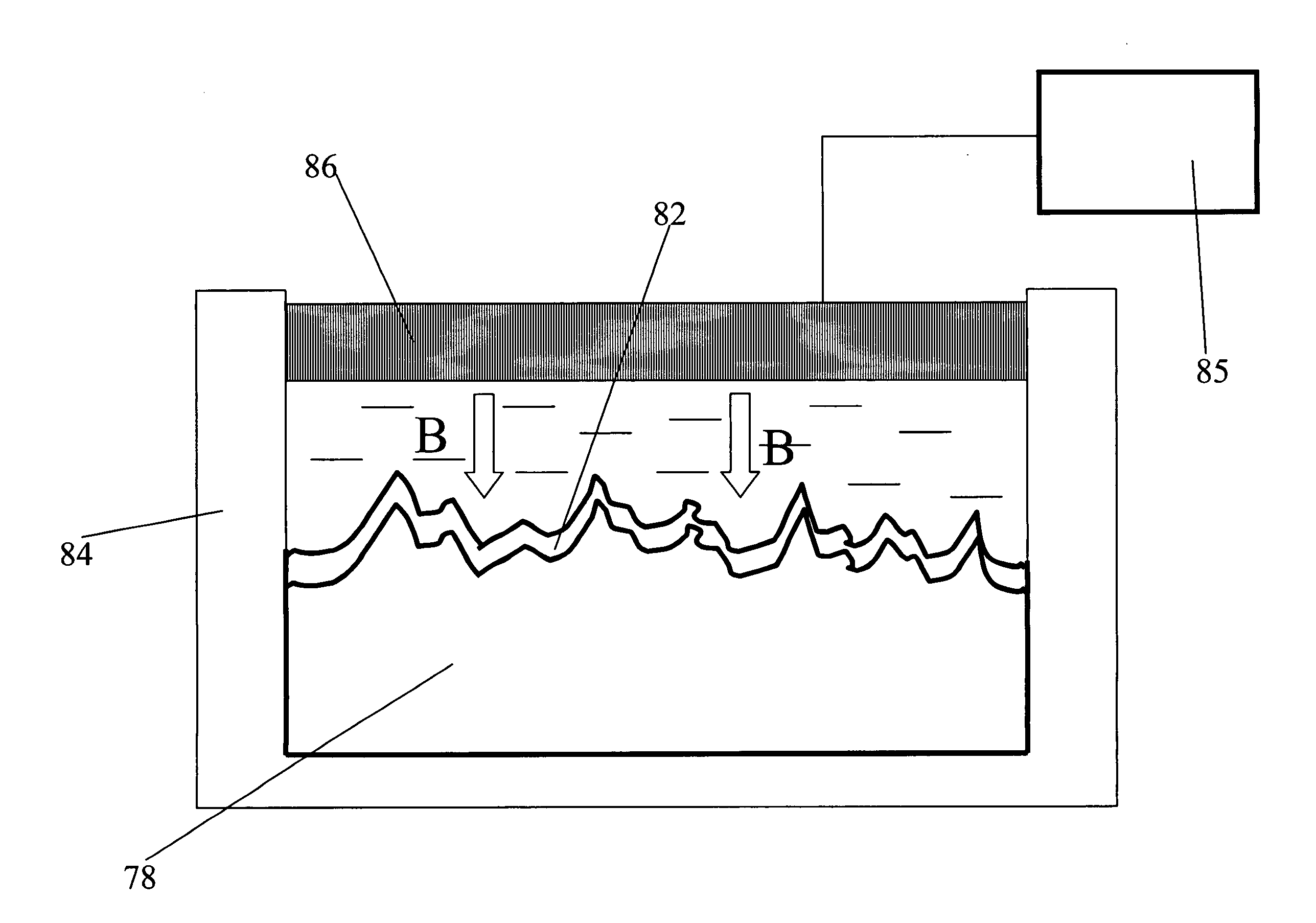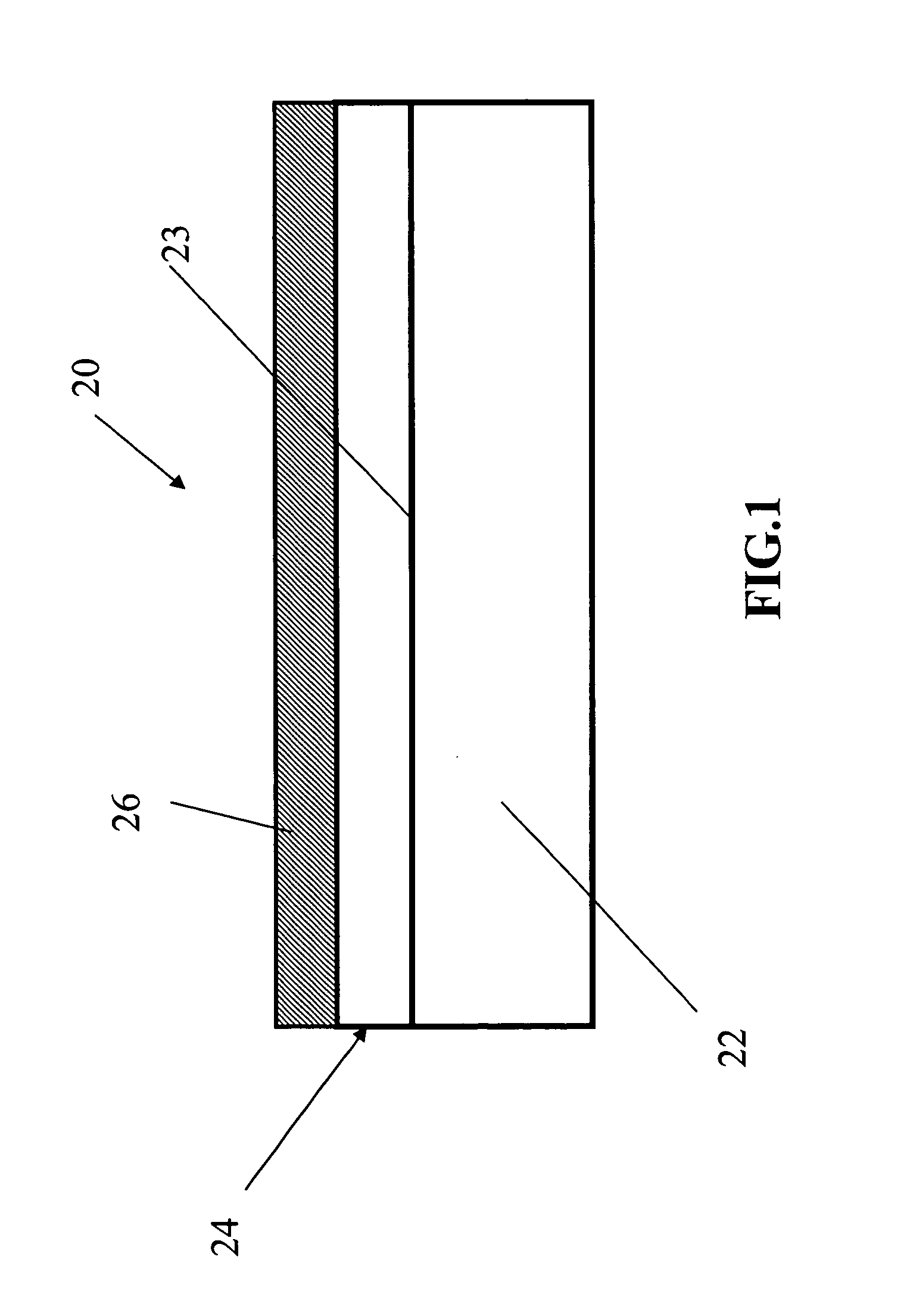Self-cooled photo-voltaic device and method for intensification of cooling thereof
a self-cooled, photo-voltaic technology, applied in the direction of photo-voltaics, semiconductor devices, electrical equipment, etc., can solve the problems of increased manufacturing costs, increased manufacturing costs, and large dimensions, and achieves cost-effectiveness, easy manufacturing and incorporation, and enhanced outward ir radiation intensity
- Summary
- Abstract
- Description
- Claims
- Application Information
AI Technical Summary
Benefits of technology
Problems solved by technology
Method used
Image
Examples
Embodiment Construction
[0027] In a simplified general form, a PV device 20 of the invention is shown in FIG. 1, which is a sectional view of the device. It can be seen that the PV device 20 contains a conventional PV unit 22 that may comprise, e.g., a Si-solar cell of the type produced by e.g. BP Solar Co., or described, e.g., by M. A. Green in >, 74, 2003, pp. 181-192. The structure of such a solar cell is well known and is beyond the scope of the present invention. If necessary, the PV unit 22 may be represented by a solar module of the type produced, e.g., by BP Solar Co. It is understood that the above references are given only as examples and do not limit the scope of the application of the invention, provided that a solar-energy generation unit is of a PV type.
[0028] The light-receiving side 23 (FIG. 1) of the PV unit 22 supports a cooling-enhancing unit 24 in the form of an IR-emitting layer or layers, which are described in detail later. A characteristic feature of the cooling-enhancing unit 24 i...
PUM
 Login to View More
Login to View More Abstract
Description
Claims
Application Information
 Login to View More
Login to View More - R&D
- Intellectual Property
- Life Sciences
- Materials
- Tech Scout
- Unparalleled Data Quality
- Higher Quality Content
- 60% Fewer Hallucinations
Browse by: Latest US Patents, China's latest patents, Technical Efficacy Thesaurus, Application Domain, Technology Topic, Popular Technical Reports.
© 2025 PatSnap. All rights reserved.Legal|Privacy policy|Modern Slavery Act Transparency Statement|Sitemap|About US| Contact US: help@patsnap.com



